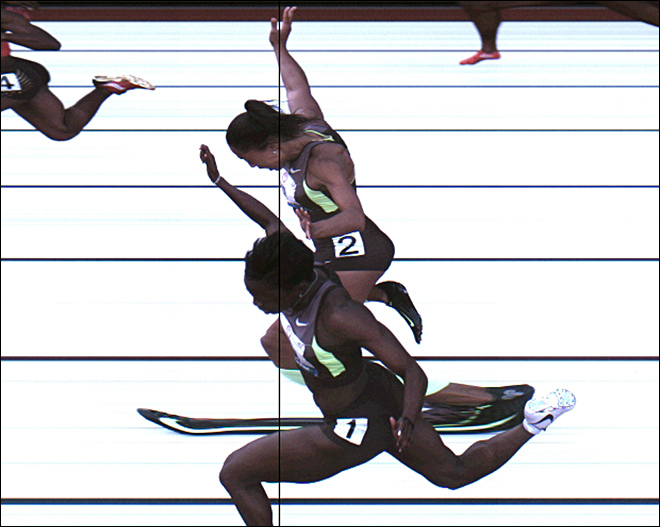
In anticipation of the upcoming 2012 Summer Olympic Games in London, TQ will be bringing you a look at how technology is influencing sport at its highest level.
The 100 metre sprint is seen as the pinnacle of the track and field world and is one of the most viewed events at the Olympics. The subsequent world record holders and winners of this race are given the title of the world’s fastest man or woman. Some of the most well-known amateur athletes have raced in this distance such as Usain Bolt, Morris Green, Donovan Bailey and Carl Lewis.
This event’s history can be traced back to Ancient Greece where the athletes would run 95 metres to a post and run back to the starting line. This concept has obviously changed over the centuries and was introduced in the inaugural Olympics in 1896. Originally the sprinters would start in an up-right position, but as the years went by sprinters would put their feet in starting blocks, with their hands on the ground, and would start in a crouching position. This allowed sprinters to gain more momentum in the beginning of the race and would eventually reduce their times. Usain Bolt and Florence Griffith-Joyner hold the world records for men and women’s 100 metres with 9.58 seconds and 10.49 seconds respectably.
Since the 100 metre sprint is an event that results in infinitesimally close finishes the need for more accurate timing has progressively became more and more important. Originally stop watches were used, however their accuracy was limited to within 0.2 seconds. Electronic timing is seen as a modern day technology, but what people may not know is that it has been used for the 100 metre event since the 1912 Olympics. It was an inventor, Ragnar Carlstedt, from the 1912 host nation of Sweden who created a reference clock that started when the gun was fired at the beginning of the race. Carlsedt also introduced the finish line camera which was first used for the 1500 metre race at the 1912 Olympics to determine second and third place in the men’s event. By the 1932 Olympics Omega had introduced the photo finish camera that imprinted the time on each frame that helped determine the results of close finishes.
By 1964 the timing of this race was conducted by electrical quartz timing system that was accurate to 0.001 seconds. As the years went by computerized timing was used and was accurate to 0.0001 seconds, making it easier to decide who crossed the finish line first. The computerized timing has become so advanced that during the 2012 London Olympics the finish line cameras will be able to take thousands of pictures of racers crossing the finish line per second.
As we see the development of technology has done nothing but help this sport, as it has for a myriad of other events and games. Unlike a sport such as the pole vault the one difference is that the electrical timing improvements made in sprinting has not had any effect on the athletes themselves. As technology keeps improving the electronic timing will become even more accurate, and it may one day prove that this ever improving aspect of the Olympics is what separates the deserving winner from the pack.